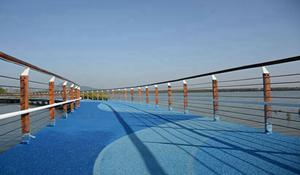Permeable Pavement is a type of porous lightweight concrete made from aggregate, high-strength cement, strong binding agents, and water. It forms a honeycomb structure with uniformly distributed voids through a thin layer of slurry that coats the surface of the aggregates, thus exhibiting characteristics of air permeability, water permeability, and lightweight. As an environmentally friendly concrete, the research and development of permeable pavement has increasingly gained attention.
Permeable Pavement has distinct differences from ordinary concrete: smaller volume, less significant capillary action of water, greater permeability, lower cement usage, and simpler construction. Therefore, the advantages of this new type of building material are becoming increasingly recognized, and it is gradually being applied in the road construction sector. It can increase the rainwater infiltration into the ground and alleviate some urban environmental issues such as the sharp decline of groundwater levels.
Permeable Pavement ecological effects:
(1)Increase the permeable and breathable area in cities to alleviate the urban "heat island effect";
(2)Make full use of rain and snow precipitation to replenish the increasingly depleted groundwater resources in urban areas;
(3)Can reduce the burden on drainage systems during the rainy season and significantly decrease pollution of urban water bodies from heavy rainfall;
(4)Absorb noise generated by vehicle movement, prevent surface water accumulation on rainy days, and reduce nighttime glare;
(5)Prevent surface water accumulation and nighttime glare, enhancing the comfort and safety of vehicle and pedestrian passage;
(6)Adsorb urban pollutants and dust, reducing airborne dust pollution.













